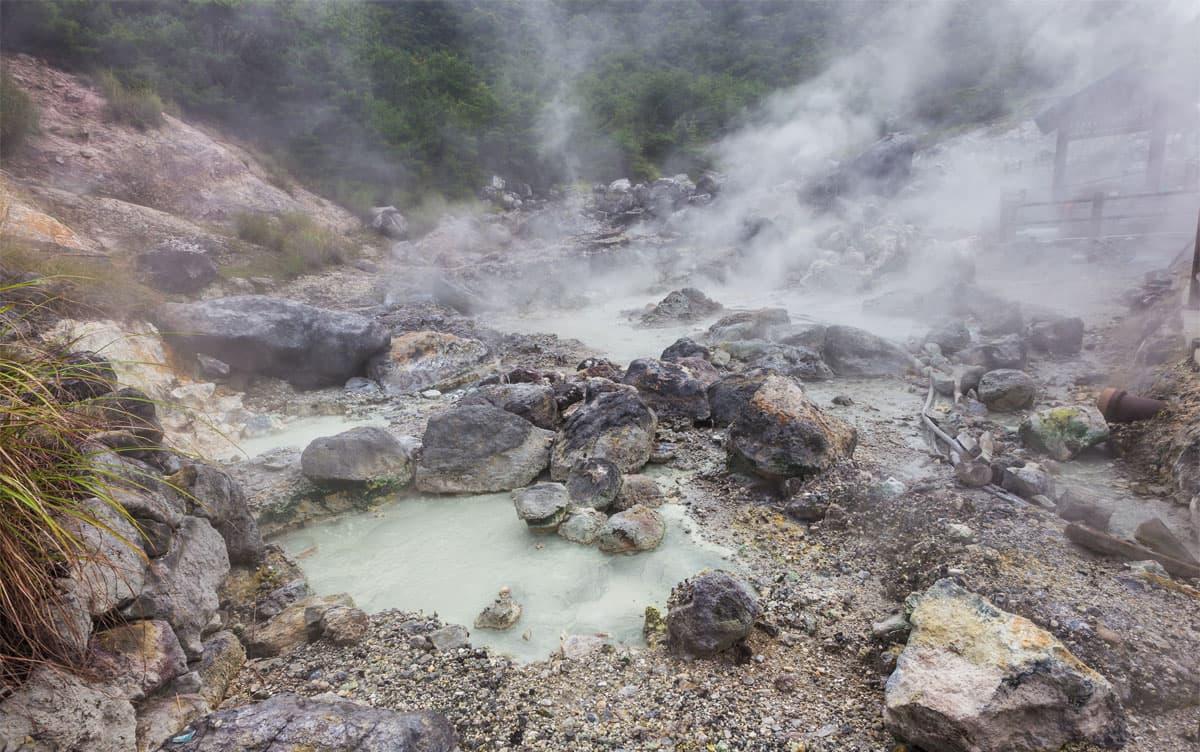Research News
Discovery of a Third RNA Virus Linage in Extreme Environments
 Image by kan_khampanya/Shutterstock
Image by kan_khampanya/Shutterstock
A research group led by University of Tsukuba has discovered a novel RNA viral genome from microbes inhabiting a high-temperature acidic hot spring. Their study shows that RNA viruses can live in high-temperature environments (70℃-80℃), where no RNA viruses have been observed before. In addition to the two known RNA virus kingdoms, a third kingdom may exist.
Tsukuba, Japan—There are numerous RNA virus species on Earth. However, their diversity and evolution as well as roles in the ecosystem remain unclear.
In this study, using an original method, researchers have discovered a novel RNA viral genome from thermoacidophilic microbes (close to the last universal common ancestor of life) in the hot springs of Unzen and Kirishima fumaroles. This RNA virus was named hot spring RNA virus (HsRV) and was presumed to infect thermoacidophilic bacteria. This study shows that RNA viruses can inhabit high-temperature environments, where life is believed to have originated. Furthermore, HsRV considerably differs from all other RNA viruses belonging to the two established RNA virus kingdoms, indicating the existence of a previously overlooked third RNA virus kingdom.
Future studies will attempt to culture host strains that harbor HsRV and elucidate the virological properties and ecology of HsRV. In addition, the same method used in this study will be applied to various microorganisms, animals, and plants to explore possible undiscovered RNA viruses.
###
This study was supported by JSPS KAKENHI (Grant Nos. 15H05468, and 20K20377) and by Grants-in-Aid for Scientific Research on Innovative Areas from the Ministry of Education, Culture, Science, Sports, and Technology (MEXT) of Japan (Grant Nos. 22H04879, 20H05579, 19H05684, 16H06429, 16K21723, and 16H06437).
Original Paper
- Title of original paper:
- Double-stranded RNA sequencing reveals distinct riboviruses associated with thermoacidophilic bacteria from hot springs in Japan
- Journal:
- Nature Microbiology
- DOI:
- 10.1038/s41564-023-01579-5
Correspondence
Assistant Professor URAYAMA Syun-ichi
Institute of Life and Environmental Sciences, University of Tsukuba
Deputy Director NUNOURA Takuro (Principal Researcher)
Research Center for Bioscience and Nanoscience (CeBN), Japan Agency for Marine-Earth Science and Technology (JAMSTEC)
Associate Professor OKUMURA Tomoyo
Marine Core Research Institute, Kochi University
Professor KUROSAWA Norio
Faculty of Science and Engineering, Soka University
Related Link
Institute of Life and Environmental Sciences








